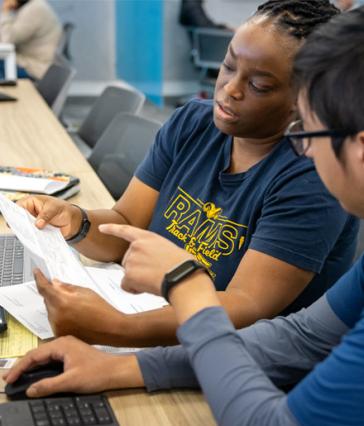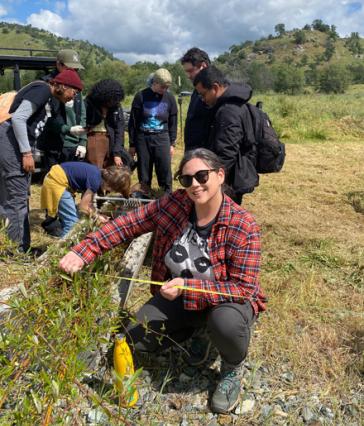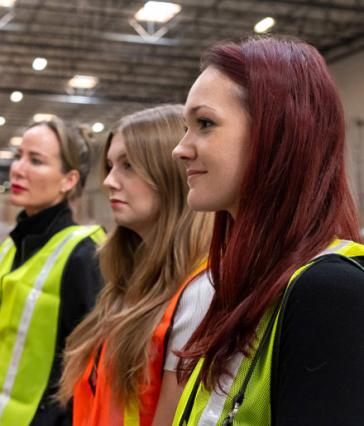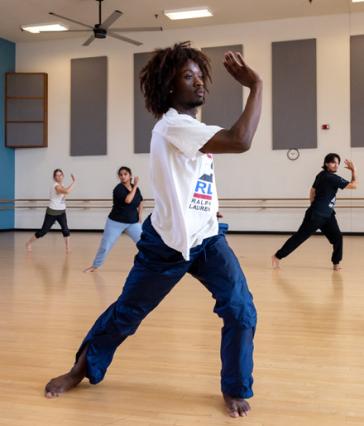CSULB students join effort to assess impact of Huntington Beach oil spill
The mysterious sheen on the water and the stench in the cool marine air more than a week ago could only mean one thing. Crude oil was leaking from a pipe somewhere beneath the ocean.
Within hours, energy officials determined that oil indeed was leaking nearly 5 miles offshore in Huntington Beach, threatening Southern California’s coastal habitats, an area that is home to native marine life and sensitive ecological systems. Although understanding the full scale of the environmental damage from the recent Huntington Beach oil spill will take time, Cal State Long Beach joined in the search for answers this weekend.
In partnership with the National Oceanic and Atmospheric Administration (NOAA) and UC Riverside, graduate students from the Shark Lab and Whitcraft Wetlands Lab took part in field sampling along various Southern California shorelines. The NOAA contacted CSULB because of its expertise in marine biology and environmental science, as well as its specialized equipment, Professor Chris Lowe said.
CSULB’s highly rated Marine Biology Program has been tapped recently by the media for its experts in the field. Professors Gwen Goodmanlowe and Christine Whitcraft were featured on several news sites in the days following the oil spill.
On the weekend, students, under the direction of Whitcraft and Lowe, pulled in hundreds of pounds of fish in a custom-made net that is used to collect fish along the surf line. Using Lowe’s connections, the team was able to conduct sampling along the coastline with the assistance of Southern California lifeguards.
“They are looking for chemicals, namely for polycyclic aromatic hydrocarbons (PAHs) and the degree of the exposure to the fish,” Lowe said.

Oil spills can cause PAH pollution, affect marine organisms, and seriously impact the marine environment toxicologically.
Lowe said the crew pulled in hundreds of fish but collected just 100 for testing; the rest were safely released. Biologists from UC Riverside assisted with fish sampling on the beaches, allowing scientists from NOAA (with federal sample processing certification) to manage the processing of samples which will be used to assess the oil spill’s impact on the natural resources.
The two-day project gave CSULB students the opportunity to put what they have learned in the classroom to practical use. After being trained in hazardous precautions, the group pulled on wetsuits and began dragging the shoreline for fish, careful to avoid as many balls of tar that remained in the sand.
“This is something you never want to hear happen, but unfortunately, these things do happen,” said Emily Spurgeon, a third-year graduate student in the Shark Lab. “That’s why I like being a marine biologist because when things to happen, I know I can be involved and help. I can at least be part of the solution.”
The students lined up along beach, four or five to side, holding the ends in the strong surf while a lifeguard Jet ski pulled the net closer to the shore. They then had to pull the haul in, keeping a few fish each time and releasing the rest.
"It was a great opportunity for these kids to work shoulder-to-shoulder with NOAA and other institutions," Lowe said.
Like other students who aided in the effort, Sebastian Garcia, second-year graduate student in the Whitcraft Wetlands Lab, said the experience of working with various agencies and helping the environment was invaluable.
“It’s unfortunate that the oil spill happened but it was a great experience to be out there and be a part of the initiative to better understand what happened in the area,” Garcia said. “It’s a great feeling and this is why I went into this field – to better understand how it impacted the marine community.”

















